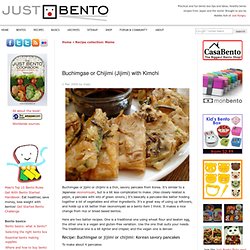

About. I’m just your average girl who loves to cook and who loves noodles.

I am noodle folk, broth runs through my veins. Whenever I travel, noodle restaurants are always on my list of places to visit. In 2007, I visited New York, and one of the places I wanted to eat at most was Momofuku Noodle Bar, but it almost didn’t happen. My first visit to Momofuku seemed like fate, it never would have happened without a lucky string of delayed flights, flukey taxi drop-offs, and the willingness to wait 45 minutes for the restaurant to open (although Vancouverites who eat at Toshi know 45 minutes is not a long wait). A couple of years later I had my wedding and honeymoon in New York City. Of course, my love of food isn’t restricted to *just* noodles. This year though, I got the Momofuku cookbook for Christmas. I know, I know. Update: One can’t live on Momofuku food alone! September 2010 Update:Now that I’ve cooked through the entire Momofuku book, it’s time to give myself a new goal.
Chicken Nanban 2 ways. Chicken nanban is fried chicken that’s been briefly marinated in a sweet-sour-salty and slightly spicy sauce or dressing called nanban sauce.

The recipe for basic, make-ahead-and-stock nanban sauce is over on Just Hungry. Normally chicken nanban is deep-fried, but my bento friendly versions are either shallow-fried or simply panfried, cutting down a bit on the fat as well as avoiding the Fear of Frying that many people have. Quite a lot of popular Japanese bentos have deep fried items in them, but I usually to re-interpret the recipes so that they can be pan-fried or shallow-fried. (The chicken karaage that I have in the book for example is shallow-fried in a frying pan.) Chicken nanban is often served smothered with tartare sauce. Both recipes make 4 to 5 bento-sized portions, although these little nuggets are so good that you might find them disappearing rather fast. Pan Fried Chicken Nanban By Makiko Itoh. All natural instant pickling (tsukemono) seasoning mix. If you browse the aisles of a Japanese grocery, you may run across various instant tsukemono mixes.

These come either in liquid or dry form. The dry granules in particular are very handy to have around, and they can make sokuseki zuke in a hurry. However, they usually contain MSG, preservatives and such. Scouring around the Japanese parts of the interweb, I came across several pages that had recipes for a homemade instant tsukemono mixes, such as this one. They all used MSG or dashi stock granules though, and I wanted to come up with a mixture that was made up 100% of natural ingredients. After some tinkering around and almost ruining the motor of my food processor, here’s the mixture I came up with. All natural instant tsukemono seasoning mix This makes about 2 cups. Equipment needed: a food processor If you are using sheet konbu (or whole konbu leaves), cut them up as fine as you can with scissors. Put the cut up konbu in a food processor and process until quite finely chopped. Notes. Recipe collection: Mains.
Buchimgae or Chijimi (Jijimi) with Kimchi. Buchimgae or jijimi or chijimi is a thin, savory pancake from Korea.

It’s similar to a Japanese okonomiyaki, but is a bit less complicated to make. (Also closely related is pajon, a pancake with lots of green onions.) It’s basically a pancake-like batter holding together a lot of vegetables and other ingredients. It’s a great way of using up leftovers, and holds up a lot better than okonomiyaki as a bento item I think. It makes a nice change from rice or bread based bentos. Here are two batter recipes. Recipe: Buchimgae or jijimi or chijimi: Korean savory pancakes To make about 4 pancakes Batter of your choice (see below) About 3 cups of finely julienned vegetables: green onions, garlic chives, bean sprouts (no need to julienne these), carrots, greens, etc. 1 cup of kimchi cabbage, roughly chopped (or add more vegetables instead)Other things of your choice: leftover chopped up or julienned meat or ham, shelled edamame, meat soboro, etc.
Heat up a frying pan or griddle, and coat with oil.